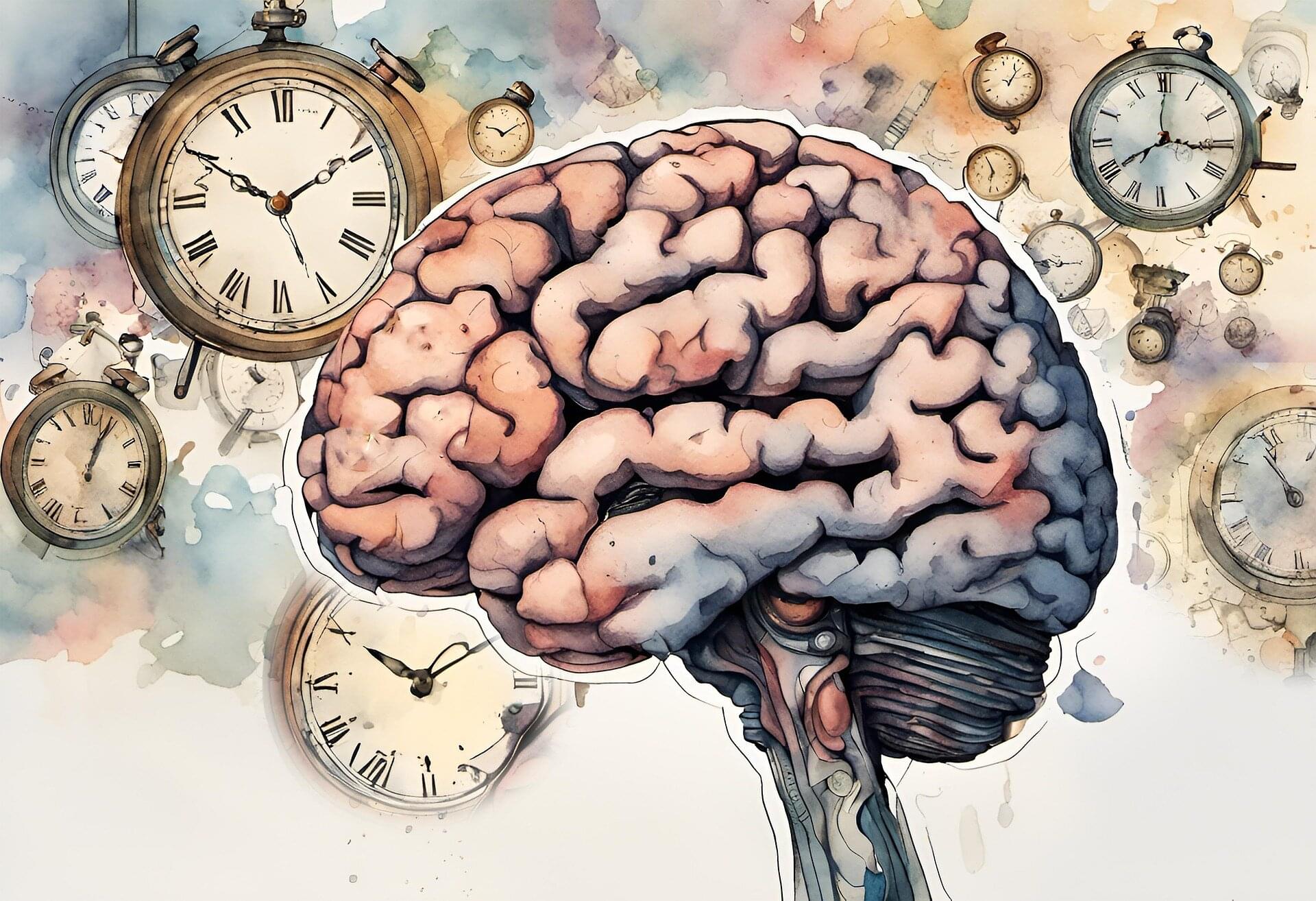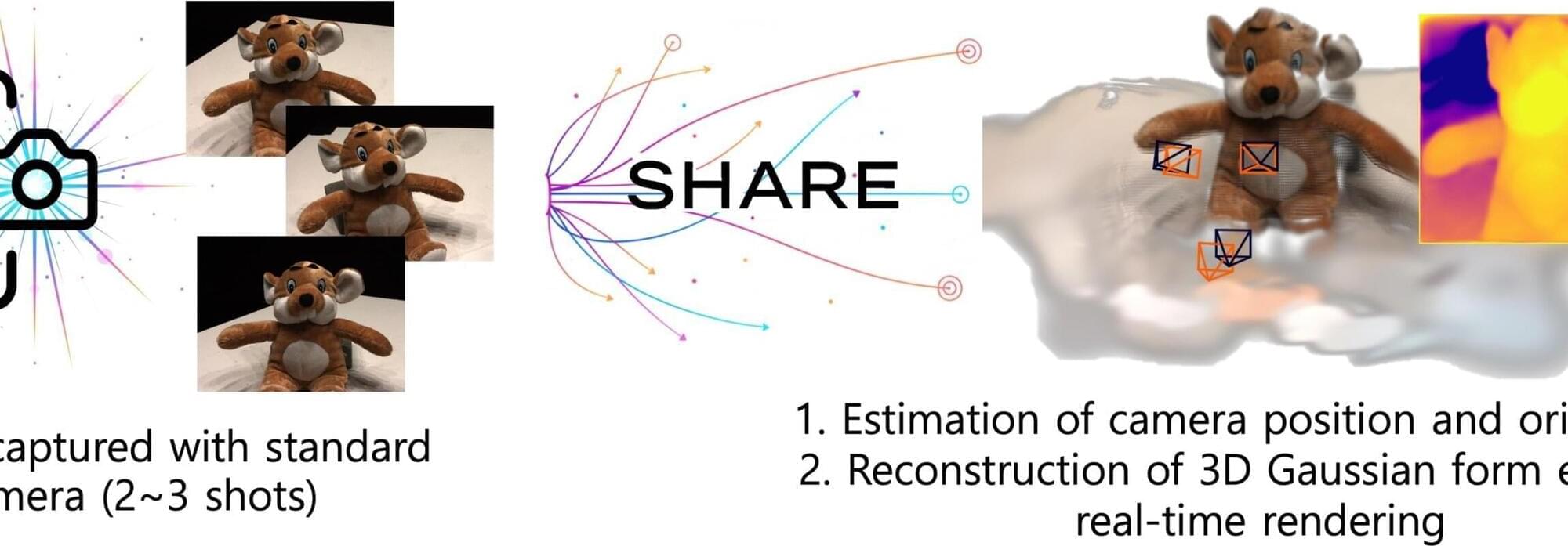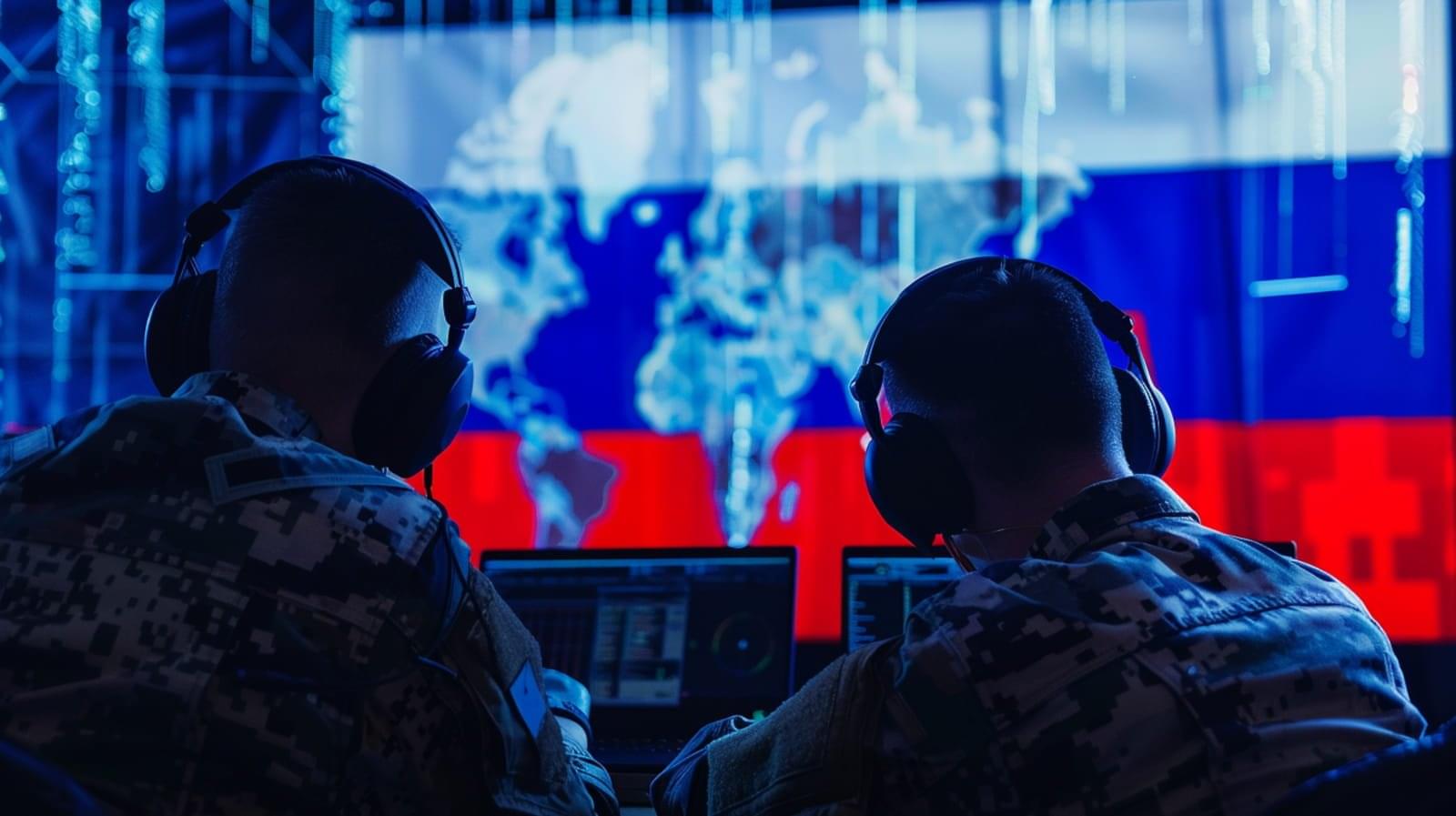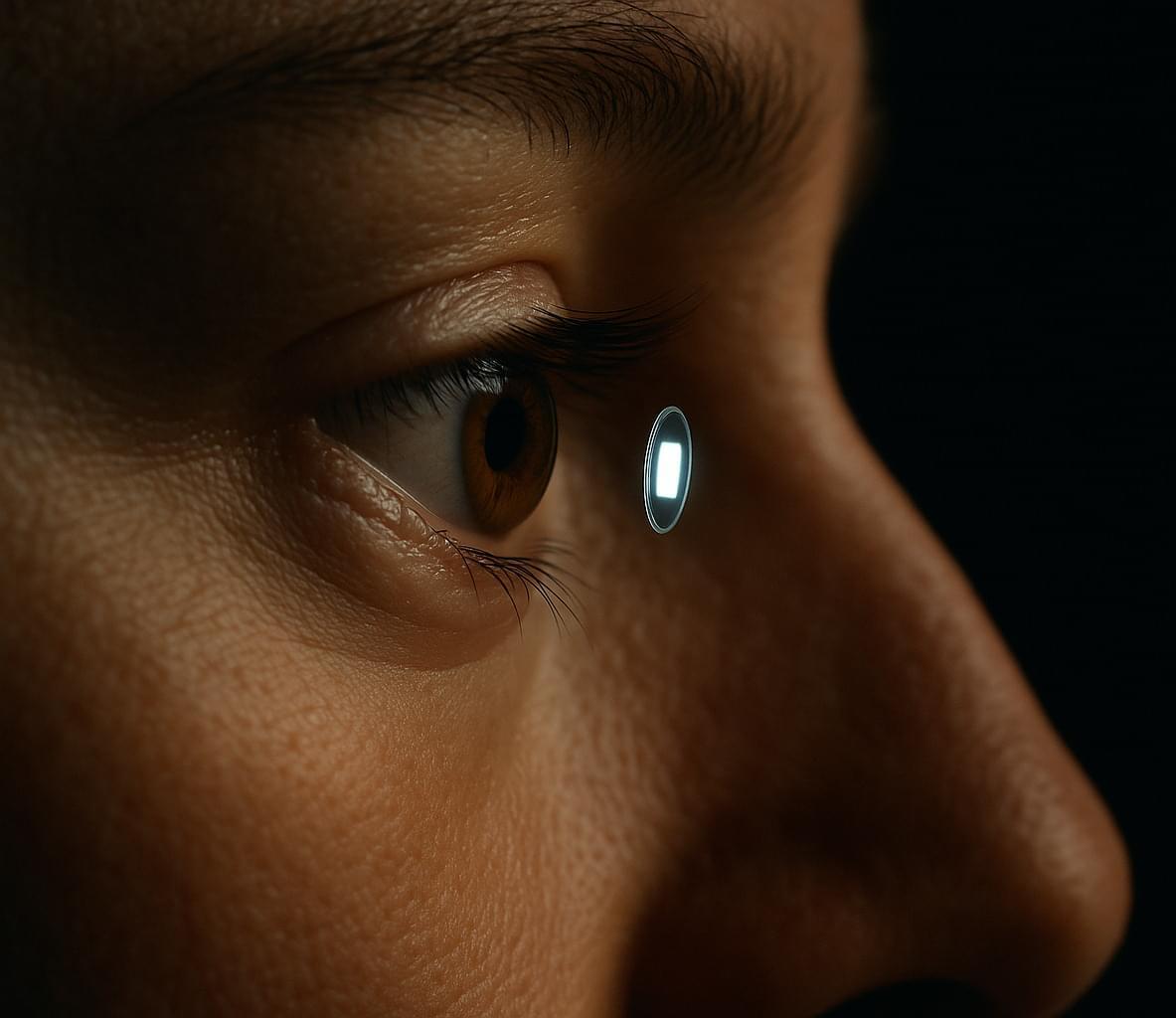There’s also a VR version available.
Category: virtual reality

How the brain decides what to remember: Study reveals sequentially operating molecular ‘timers’
Every day, our brains transform quick impressions, flashes of inspiration, and painful moments into enduring memories that underpin our sense of self and inform how we navigate the world. But how does the brain decide which bits of information are worth keeping—and how long to hold on?
Now, new research demonstrates that long-term memory is formed by a cascade of molecular “timers” unfolding across brain regions. With a virtual reality-based behavioral model in mice, the scientists discovered that long-term memory is orchestrated by key regulators that either promote memories into progressively more lasting forms or demote them until they are forgotten.
The findings, published in Nature, highlight the roles of multiple brain regions in gradually reorganizing memories into more enduring forms, with gates along the way to assess salience and promote durability.

3D worlds created from just a few phone photos
Existing 3D scene reconstructions require a cumbersome process of precisely measuring physical spaces with LiDAR or 3D scanners, or correcting thousands of photos along with camera pose information. A research team at KAIST has overcome these limitations and introduced a technology enabling the reconstruction of 3D—from tabletop objects to outdoor scenes—with just two to three ordinary photographs.
The results, posted to the arXiv preprint server, suggest a new paradigm in which spaces captured by camera can be immediately transformed into virtual environments.
The research team led by Professor Sung-Eui Yoon from the School of Computing developed the new technology called SHARE (Shape-Ray Estimation), which can reconstruct high-quality 3D scenes using only ordinary images, without precise camera pose information.
Novel smart fabrics give robots a delicate grip
Robots aren’t always the most delicate of machines when handling fragile objects. They don’t have the lightness of touch of humans. But that could be about to change thanks to a new development in smart materials.
Researchers have developed a method for weaving flexible fibers that can be controlled by magnetic fields. Not only can this be used for robot hands to pick up objects like soft fruits, potato chips and worms, but it can also be used in a range of other applications. These include gloves that provide a realistic touch in virtual reality and breathable fabrics.

Russian hackers abuse Hyper-V to hide malware in Linux VMs
The Russian hacker group Curly COMrades is abusing Microsoft Hyper-V in Windows to bypass endpoint detection and response solutions by creating a hidden Alpine Linux-based virtual machine to run malware.
Inside the virtual environment, the threat actor hosted its custom tools, the CurlyShell reverse shell and the CurlCat reverse proxy, which enabled operational stealth and communication.
Curly COMrades is a cyber-espionage threat group believed to be active since mid-2024. Its activities are closely aligned with Russian geopolitical interests.

Homo Invocator
We live immersed in a persistent illusion: the idea that consciousness arises from the brain like the flame from a candle. Contemporary science, constrained by the very instruments it creates, proclaims that the mind is merely the result of electrical impulses and chemical reactions — an epiphenomenon of flesh.
Yet a deeper look — one that doesn’t reject science but rather transcends it — reveals a more radical reality: we, living beings, are not the origin of consciousness, but rather its antenna.
We are hardware. Bodies shaped by millions of years of biological evolution, a complex architecture of atoms and molecules organized into a fractal of systems. But this hardware, no matter how sophisticated, is nothing more than a receptacle, a stage, an antenna. What truly moves, creates, and inspires does not reside here, within this tangible three-dimensional realm; it resides in an unlimited field, a divine matrix where everything already exists. Our mind, far from being an original creator, is a channel, a receiver, an interpreter.
The great question of our time — and perhaps of all human history — is this: how can we update the software running on this biological hardware without the hardware itself becoming obsolete? Herein lies the fundamental paradox: we can dream of enlightenment, wisdom, and transcendence, yet if the body does not keep pace — if the physical circuits cannot support the flow — the connection breaks, the signal distorts, and the promise of spiritual evolution stalls.
The human body, a product of Darwinian evolution’s slow dance, is both marvel and prison. Our eyes capture only a minuscule fraction of the electromagnetic spectrum; our ears are limited to a narrow range of frequencies; our brains filter out and discard 99% of the information surrounding us. Human hardware was optimized for survival — not for truth!
This is the first major limitation: if we are receivers of a greater reality, our apparatus is radically constrained. It’s like trying to capture a cosmic symphony with an old radio that only picks up static. We may glimpse flashes — a sudden intuition, an epiphany, a mystical experience — but the signal is almost always imperfect.
Thus, every spiritual tradition in human history — from shamans to mystery schools, from Buddhism to Christian mysticism — has sought ways to expand or “hack” this hardware: fasting, meditation, chanting, ecstatic dance, entheogens. These are, in fact, attempts to temporarily reconfigure the biological antenna to tune into higher frequencies. Yet we remain limited: the body deteriorates, falls ill, ages, and dies.
If the body is hardware, then the mind — or rather, the set of informational patterns running through it — is software: human software (and a limited one at that). This software isn’t born with us; it’s installed through culture, language, education, and experience. We grow up running inherited programs, archaic operating systems that dictate beliefs, prejudices, and identities.
Beneath this cultural software, however, lies a deeper code: access to an unlimited field of possibilities. This field — call it God, Source, Cosmic Consciousness, the Akashic Records, it doesn’t matter — contains everything: all ideas, all equations, all music, all works of art, all solutions to problems not yet conceived. We don’t invent anything; we merely download it.
Great geniuses throughout history — from Nikola Tesla to Mozart, from Leonardo da Vinci to Fernando Pessoa — have testified to this mystery: ideas “came” from outside, as if whispered by an external intelligence. Human software, then, is the interface between biological hardware and this divine ocean. But here lies the crucial question: what good is access to supreme software if the hardware lacks the capacity to run it?
An old computer might receive the latest operating system, but only if its minimum specifications allow it. Otherwise, it crashes, overheats, or freezes. The same happens to us: we may aspire to elevated states of consciousness, but without a prepared body, the system fails. That’s why so many mystical experiences lead to madness or physical collapse.
Thus, we arrive at the heart of the paradox. If the hardware doesn’t evolve, even the most advanced software download is useless. But if the software isn’t updated, the hardware remains a purposeless machine — a biological robot succumbing to entropy.
Contemporary society reflects this tension. On one hand, biotechnology, nanotechnology, and regenerative medicine promise to expand our hardware: stronger, more resilient, longer-lived bodies. On the other, the cultural software governing us remains archaic: nationalism, tribalism, dogma, consumerism. It’s like installing a spacecraft engine onto an ox-drawn cart.
At the opposite end of the spectrum, we find the spiritual movement, which insists on updating the software — through meditation, energy therapies, expanded states of consciousness — but often neglects the hardware. Weakened, neglected bodies, fed with toxins, become incapable of sustaining the frequency they aim to channel. The result is a fragile, disembodied spirituality — out of sync with matter.
Humanity’s challenge in the 21st century and beyond is not to choose between hardware and software, but to unify them. Living longer is meaningless if the mind remains trapped in limiting programs. Aspiring to enlightenment is futile if the body collapses under the intensity of that light.
It’s essential to emphasize: the power does not reside in us (though, truthfully, it does — if we so choose). This isn’t a doctrine of self-deification, but of radical humility. We are merely antennas. True power lies beyond the physical reality we know, in a plane where everything already exists — a divine, unlimited power from which Life itself emerges.
Our role is simple yet grand: to invoke. We don’t create from nothing; we reveal what already is. We don’t invent; we translate. A work of art, a mathematical formula, an act of compassion — all are downloads from a greater source.
Herein lies the beauty: this field is democratic. It belongs to no religion, no elite, no dogma. It’s available to everyone, always, at any moment. The only difference lies in the hardware’s capacity to receive it and the (human) software that interprets it.
But there are dangers. If the hardware is weak or the software corrupted, the divine signal arrives distorted. This is what we see in false prophets, tyrants, and fanatics: they receive fragments of the field, but their mental filters — laden with fear, ego, and the desire for power — twist the message. Instead of compassion, violence emerges; instead of unity, division; instead of wisdom, dogma.
Therefore, conscious evolution demands both purification of the software (clearing toxic beliefs and hate-based programming) and strengthening of the hardware (healthy bodies, resilient nervous systems). Only then can the divine frequency manifest clearly.
If we embrace this vision, humanity’s future will be neither purely biological nor purely spiritual — it will be the fusion of both. The humans of the future won’t merely be smarter or longer-lived; they’ll be more attuned. A Homo Invocator: the one who consciously invokes the divine field and translates it into matter, culture, science, and art.
The initial paradox remains: hardware without software is useless; software without hardware is impossible. But the resolution isn’t in choosing one over the other — it’s in integration. The future belongs to those who understand that we are antennas of a greater power, receivers of an infinite Source, and who accept the task of refining both body and mind to become pure channels of that reality.
If we succeed, perhaps one day we’ll look back and realize that humanity’s destiny was never to conquer Earth or colonize Mars — but to become a conscious vehicle for the divine within the physical world.
And on that day, we’ll understand that we are neither merely hardware nor merely software. We are the bridge.
Deep down, aren’t we just drifting objects after all?
The question is rhetorical, for I don’t believe any of us humans holds the answer.
__
Copyright © 2025, Henrique Jorge (ETER9)
Image by Gerd Altmann from Pixabay
[ This article was originally published in Portuguese in Link to Leaders at: https://linktoleaders.com/o-ser-como-interface-henrique-jorge-eter9/]
Exploring 3D Gaussian Splats In Virtual Reality
Learn more about Synthetic Gaussian Splatting and get Olli Huttunen’s Blender tool.
THE FOREST KING | Red Iron Road | Full Episode
Set in a suffocating, over-commercialized future, a young boy’s desire for success and status leads him into a terrifying and deadly new reality through the lens of a mysterious VR game.
His desperate father must now race against both time and technology to save his dying son.
But the boy is the only one who can save himself — before becoming another faceless pawn of the Forest King.
Adapted from the poem “The Forest Tsar” (1818) by Vasiliy Zhukovsky.
🎬 THE FOREST KING
The second installment of the animated horror anthology RED IRON ROAD.
Each episode is a standalone short film (10–20 minutes) inspired by European literature, produced with unique creative partners in distinctive visual styles.
🏆 Festival Highlights.
• World Premiere – Nightmares Film Festival (Ohio, USA, 2022)
• Nominations – FilmQuest, Blood in the Snow Film Festival, Animaze.
🌐 Official Sites:
https://www.lakesideanimation.com/for… 🎥 Credits Directed & Written By: Lubomir Arsov Produced By: Lakeside Animation Animation By: Art Light & Riki Group (Petersburg Animation Studio) Musical Score By: Lars Korb Starring: Carlo Rota, Tom Rooney, Jaiden Cannatelli 📖 Full Cast & Crew: https://www.imdb.com/title/tt23845934… 📺 Where to Watch Season 1 of Red Iron Road: Amazon Prime Video (subscription required): https://www.primevideo.com/detail/0PB… TubiTV (free streaming): https://tubitv.com/movies/100014990/r… Plex (free streaming): https://tubitv.com/movies/100014990/r… Hoopla Digital (free with library card): https://www.hoopladigital.com/televis… Kanopy (free via library or university): https://www.kanopy.com/en/product/140… Apple TV (subscription to Prime Video required): https://tv.apple.com 🔔 Subscribe for new animated horror shorts and exclusive content! Follow Red Iron Road & Lakeside Animation: Facebook: / redironroadseries Instagram:
/ redironroadseries TikTok:
/ lakesideanimation LinkedIn:
/ lakeside-animation 🔖 Hashtags: #RedIronRoad #AdultAnimation #Games #Anthology #Animation #AnimatedAnthology #HorrorAnimation #SlavicMythology #AnimatedShortFilm #LakesideAnimation #EuropeanHorror #AnimationStudio #FolkHorror #AnimatedHorror #CreepyTales #ClassicLiterature #AnimationForAdults © 2022 Ghost Train Productions Inc.

Retina e-paper promises screens ‘visually indistinguishable from reality’
In what could be an industry shifting breakthrough, researchers have created a screen about the size of a human pupil with a resolution that breaks through the limits of pixels. The invention could radically change virtual reality and other applications.
While most video screens such as those on our phones, TVs, and stadium jumbotrons seem to improve in resolution on a monthly basis, there has been an issue in improving the resolution of the tiny screens required in virtual reality apps. The problem is that as the screen moves closer to the human eye, the pixels that comprise it need to get smaller and smaller. Yet, if pixels get too small, their function starts to degrade and the image suffers. On a micro-LED screen, for example, pixels can’t get much smaller than one micrometer wide before losing their ability to render a clear, crisp image.
So instead of relying on pixels, researchers from Chalmers University of Technology, the University of Gothenburg and Uppsala University in Sweden turned to a different technique. They created what they’ve termed “metapixels” out of tungsten oxide, a material that can switch from being an insulator to a metal based on its electrical state. The metapixels reflect light differently based on their size and how they’re arranged, and can be manipulated by an electrical current. In a way, they function much like the pigments in bird’s feathers, which can take on different colors based on how the light is hitting them.
New Models Show How Solar ‘Tornadoes’ Could Wreak Havoc on Earth
Weather forecasting is a powerful tool. During hurricane season, for instance, meteorologists create computer simulations to forecast how these destructive storms form and where they might travel, which helps prevent damage to coastal communities.
When you’re trying to forecast space weather, rather than storms on Earth, creating these simulations gets a little more complex.
To simulate space weather, you would need to fit the Sun, the planets, and the vast empty space between them in a virtual environment, also known as a simulation box, where all the calculations would take place.